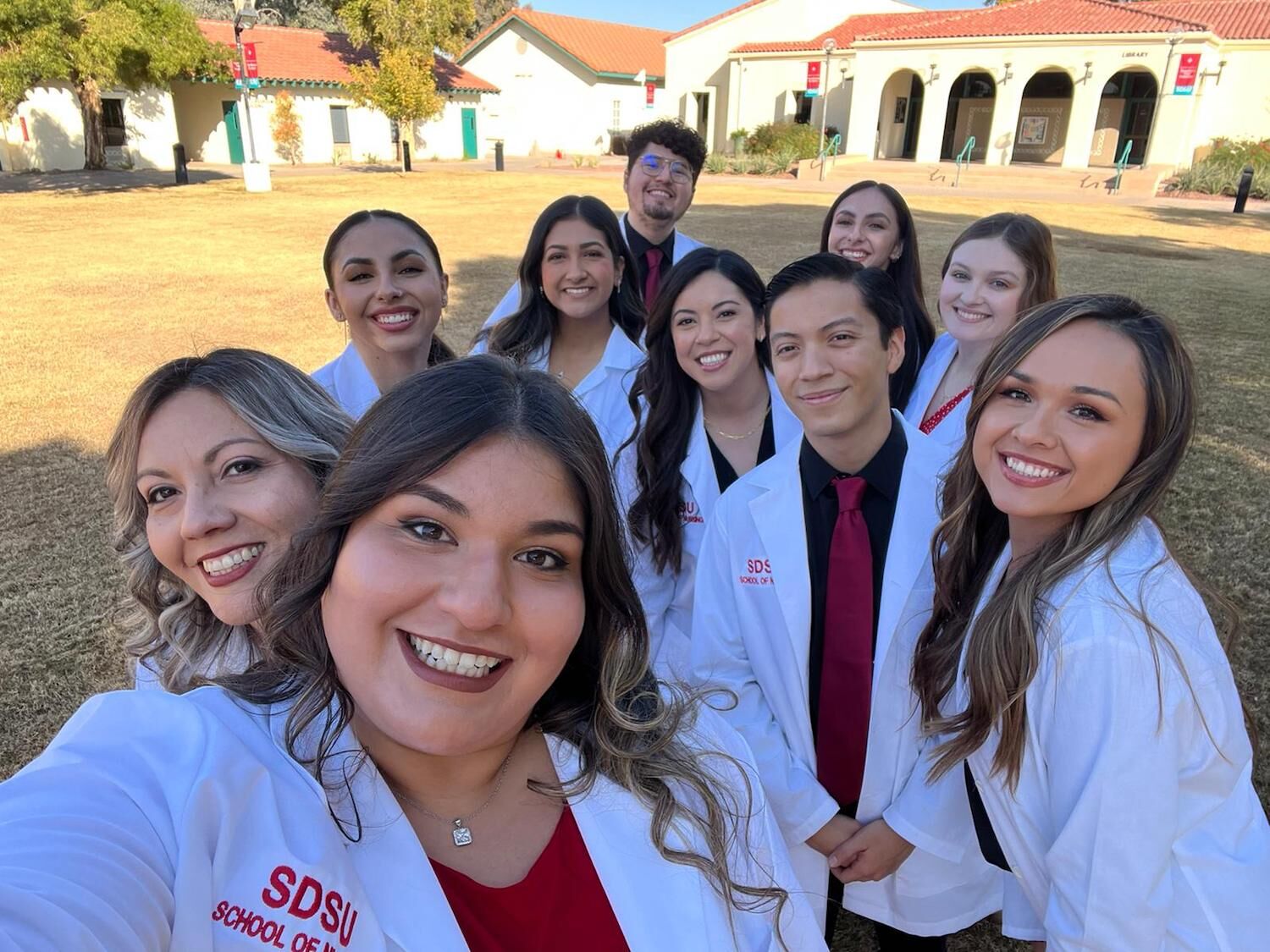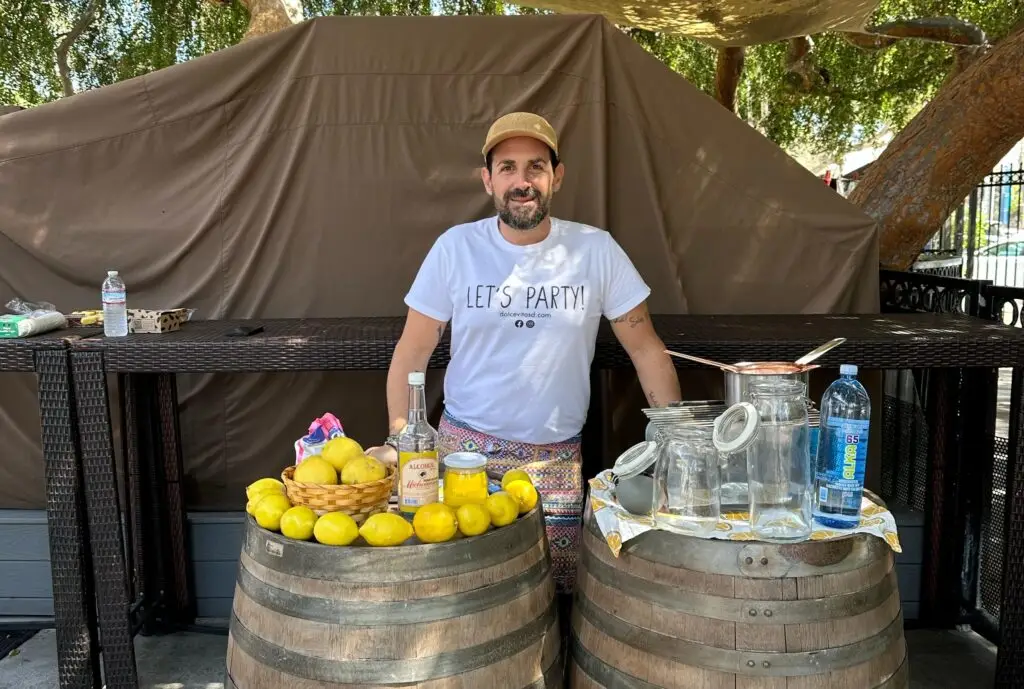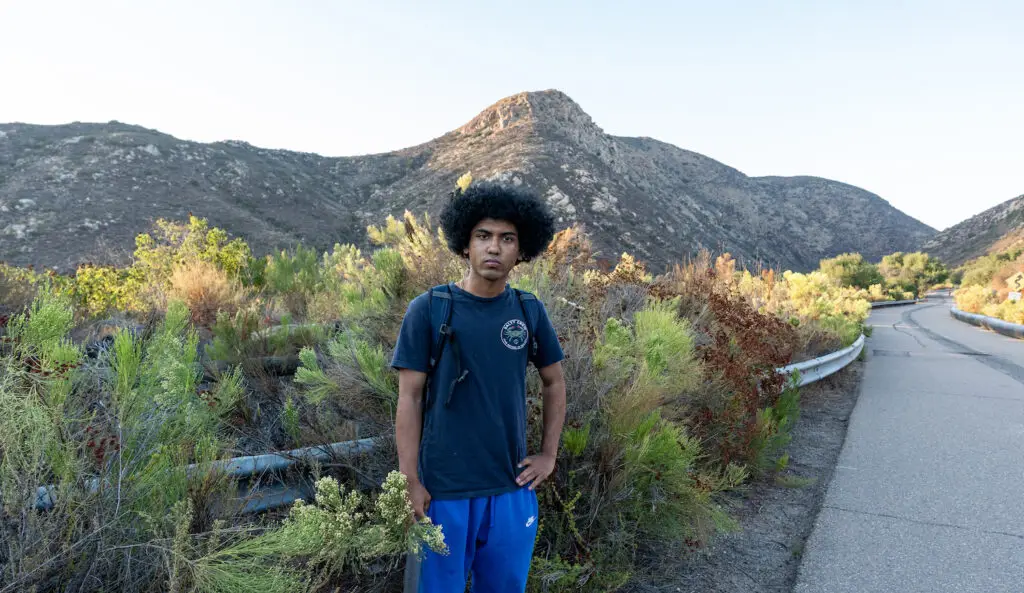
The inaugural cohort of SDSU’s Calexico campus nursing program celebrates after their white coat ceremony to kick off clinical training.
Courtesy of Isabella Harvey
The moment the white coat slipped over her shoulders, Bella Harvey knew her life would change forever.
This past December, she and nine of her classmates lined up for a special “white coat ceremony” to begin their clinical nursing training as the first-ever class of San Diego State University’s Bachelor of Science in Nursing program at its Imperial Valley campus in Calexico.
“It felt like an honor. They always tell us, ‘You guys are always going to be the first. They’re always going to remember you guys,’” Harvey says. “I didn’t even think I was going to get accepted because it’s very competitive.”
Harvey grew up in Imperial Valley and always wanted to be a nurse, but when she was a kid, there wasn’t any local place to study. Now, there is, and Harvey was part of the historic moment.
“I was just like, ‘Wow, this is really coming true,’” she says. “I couldn’t be more appreciative of everyone for how much work they’ve done to make this program happen.”
The current BSN course has been several years in the making. SDSU has had a nursing program in Imperial Valley since 2007 but could only admit students who had already received associate degrees in nursing at community college. That meant no freshmen and no transfer students. And this created a bottleneck, says Helina Hoyt, associate director of nursing at SDSU Imperial Valley.
That bottleneck has big impacts on medical care in Imperial Valley. As of last year, the region had just 900 nurses to serve a population of almost 180,000—one of the lowest ratios in the state, according to California Health and Human Services.
And Covid made a dire situation worse. The region saw extremely high Covid rates, and the local hospitals relied on travel nurses to serve the surge of patients. The cost of paying those nurses totaled in the billions.
Hoyt grew up in Imperial Valley and says there have never been enough providers. “I had a rough pregnancy, and it’s hard because we had to go to Rady Children’s Hospital in San Diego when my seven-year-old son was diagnosed with Type 1 Diabetes. There wasn’t anything locally,” she says. “[We were] commuting very regularly to get care.”
Hoyt had long dreamed of creating a pipeline to train more nurses in Imperial Valley. When Karen Macauley became director of the SDSU School of Nursing two years ago, she started helping realize that vision.
“[The area’s hospitals] just didn’t have enough nurses to care for the communities of Imperial County, especially since El Centro and Imperial County [were] considered the epicenter of Covid during the pandemic,” Macaulay says. “So we went through the process of developing this program where [the motto is] ‘grow your own.’”
That means only recruiting students from Imperial County zip codes to focus on strengthening the nursing workforce locally. Macaulay also made the new program an accelerated one, so freshmen can get a bachelor’s in nursing in three years and transfer students can get theirs in two. This will more quickly alleviate the shortage, she says.
The plan is to expand from 20 students (10 freshmen and 10 transfers) to 40, though Macauley says it’s a challenge to find places for the nursing students to get the variety of clinical hours they require.
For example, there is no inpatient mental health facility in Imperial Valley. So for students to get those mental health clinic hours, the school “had to get creative,” she says. The students ended up logging their mental health hours at the Valley and Calipatria State Prison. “And we have to make sure that pediatrics, OB, and geriatric clinical placements can be delivered at Pioneers Memorial Hospital in El Centro,” Macauley says.
But will these Imperial Valley–trained nurses actually stay in the area when they graduate? A recent National Bureau of Economic Research working paper found that college graduates leave the Imperial Valley region at a higher rate than anywhere else in the state.
However, Macauley says many of the nurses that work in Imperial Valley hospitals are hometowners who stayed local, often to raise their families and take care of relatives.
Hoyt also says that educating nursing students on the specific needs of Imperial Valley can make them more devoted to serving the area. Imperial Valley has high rates of diabetes and hypertension and one of the highest rates of asthma and tuberculosis in the state.
“They have the lived experience, they are connected to [the] community, there are strong generational ties,” Hoyt says. And even if program graduates do depart the area initially, Imperial Valley “kind of calls on you,” Hoyt says. She herself left home after getting her nursing degree but then came back.
As for Harvey, she notes that having her family close by to support her during the program so far has been extremely helpful. There have been “stress tears,” she says. But will she stay in town after graduation? Harvey says she’s torn.
PARTNER CONTENT
“I would want to stay here for a little bit, but I don’t know how long,” she says. “I think it’d be nice to gain that experience and work here in the Valley. Time will tell whether I stay here forever or not.”

















